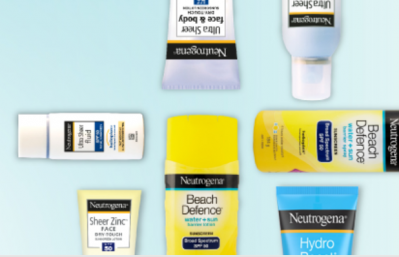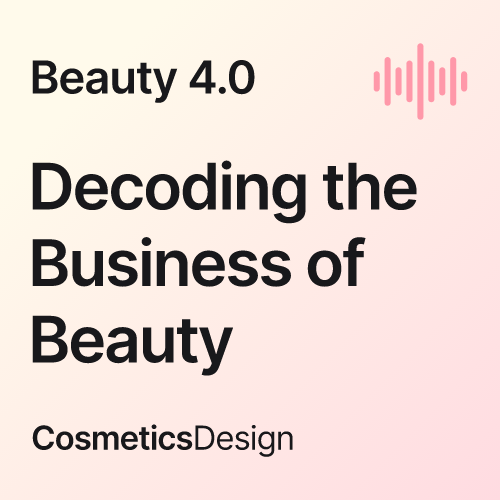Sunscreen still needed: Protective surgical face masks ineffective against UV protection, says Kao
![New research says protective face masks ineffective for UV protection. [Getty Images]](/var/wrbm_gb_food_pharma/storage/images/_aliases/wrbm_large/publications/cosmetics/cosmeticsdesign-asia.com/headlines/formulation-science/protective-surgical-face-masks-ineffective-against-uv-protection-says-kao/12576891-1-eng-GB/Protective-surgical-face-masks-ineffective-against-UV-protection-says-Kao.jpg)
For the first experiment, researchers from the firm’s Beauty Research and Creation Center (BRCC) conducted the experiment on a model with ‘skin’ that turns purple when it comes into contact with ultraviolet (UV) rays.
A cream sunscreen with SPF 50+ and a triple plus protection grade (PA) was applied to half of the model’s face and protected with a standard non-woven surgical face mask.
As hypothesised, the skin underneath the mask that was not protected by sunscreen turned purple, indicating exposure to UV rays.
The experiment was repeated with the addition of a hat and sunglasses, and the skin underneath the mask that was not protected by sunscreen still turned purple, even though it was less with the protection of the hat and the sunglasses.
In a second experiment, the researchers sought to analyse how sunscreen can hold up underneath protective face masks.
A milk-lotion sunscreen with SPF32 and PA +++ protection was applied on a human subject and given the same non-woven surgical face mask to wear for three hours.
Using a UV spectroscopic image measurement technology developed in 2017 by Kao’s Skin Care Research Institute, the results showed that the protective face mask rubs off the sunscreen on the nose and cheeks in as little as an hour.
Spiral application method
To ensure effective sun protection, BRCC researchers developed a few guidelines for sunscreen application.
Firstly, they emphasised that it is best to use sunscreen that has properties that make it resistant to rubbing. People can also reinforce their sunscreen application by applying foundation or face powder on top of it, extending its wear by not letting the mask rub directly on the sunscreen.
People should also take into account the type of sunscreen used. Milk-lotion type sunscreens have a low viscosity and are easier to apply over a wide area, while cream types are more difficult to spread due to their high viscosity.
According to the researchers, the best way to apply both types of sunscreen is with a spiral application method. This way ensures even applications, hence maximum protection.
The researchers suggested that with milk-lotion types of sunscreen, people should start but dotting the formula on the forehead, nose, chin, and both cheeks.
Next, the sunscreen should be spread using large circular movements before blending it out by apply while drawing a large spiral, and then spread it in one direction and spreading it evenly over the entire face in a single direction.
For cream formulas, the application is similar except that researchers suggest that people should apply the screen on more points on the face before spreading using smaller circular movements.
After this application, researchers advised that consumers could extend the protection of areas such as the nose and cheeks by dabbing on an extra coat of sunscreen.
Suncare affected by pandemic
In 2020, the sun care category was hit hard as COVID-19 hygiene and safety guidelines such as stay-home requirements, reducing the need for sun care products.
According to Euromonitor, the category was hit hard in Japan as consumers remaining at home in order to avoid exposure to COVID-19, therefore reducing their sun exposure and need for sun protection.
Sales of sunscreen received further blows when the Japanese government declared a state of emergency during April and May, affecting Japan’s Golden Week holidays – which traditionally have boosted sunscreen sales.
![Negative headlines about the health and environmental safety of sunscreens appears to be rattling consumer confidence. [GettyImages]](/var/wrbm_gb_food_pharma/storage/images/_aliases/wrbm_medium/publications/cosmetics/cosmeticsdesign-asia.com/article/2021/08/23/sunscreen-safety-consumer-confidence-shaky-as-negative-headlines-rekindle-health-and-environment-worries-experts/12747354-1-eng-GB/Sunscreen-safety-Consumer-confidence-shaky-as-negative-headlines-rekindle-health-and-environment-worries-Experts.jpg)
![ONLYSKIN develops a wash-on sunscreen. [ONLYSKIN]](/var/wrbm_gb_food_pharma/storage/images/_aliases/wrbm_medium/publications/cosmetics/cosmeticsdesign-asia.com/headlines/brand-innovation/onlyskin-launches-cleanser-sunscreen-hybrid-to-boost-consumer-convenience/12689437-1-eng-GB/ONLYSKIN-launches-cleanser-sunscreen-hybrid-to-boost-consumer-convenience.jpg)

![New Day Skin is targeting tweens and teens demographic. [New Day Skin]](/var/wrbm_gb_food_pharma/storage/images/_aliases/wrbm_medium/publications/cosmetics/cosmeticsdesign-asia.com/article/2021/06/03/new-day-skin-aims-to-spread-awareness-of-sun-protection-among-tweens-and-teens/12503867-1-eng-GB/New-Day-Skin-aims-to-spread-awareness-of-sun-protection-among-tweens-and-teens.jpg)





![Indus Valley is working to corner 30% of India's online premium boxed hair colour market. [Indus Valley]](/var/wrbm_gb_food_pharma/storage/images/_aliases/wrbm_tiny/publications/cosmetics/cosmeticsdesign-asia.com/article/2024/07/26/indus-valley-aims-to-secure-30-of-india-s-online-premium-hair-colour-market-with-organic-offerings/17594932-5-eng-GB/Indus-Valley-aims-to-secure-30-of-India-s-online-premium-hair-colour-market-with-organic-offerings.jpg)
![[Getty Images]](/var/wrbm_gb_food_pharma/storage/images/_aliases/wrbm_tiny/publications/cosmetics/cosmeticsdesign-asia.com/china/china-focus-latest-developments-in-china-s-booming-beauty-market25/17606695-1-eng-GB/China-focus-Latest-developments-in-China-s-booming-beauty-market.jpg)
![Kosé has launched makeup brand Visée in Singapore as part of plans to reinforce its position in SEA. [Visée]](/var/wrbm_gb_food_pharma/storage/images/_aliases/wrbm_tiny/publications/cosmetics/cosmeticsdesign-asia.com/headlines/business-financial/visee-singapore-kose-aims-to-enhance-brand-visibility-in-sea-with-new-launch/17587264-1-eng-GB/Visee-Singapore-Kose-aims-to-enhance-brand-visibility-in-SEA-with-new-launch.jpg)
![ble C&C is set on reinforcing its competitiveness in China’s beauty market. [Missha]](/var/wrbm_gb_food_pharma/storage/images/_aliases/wrbm_tiny/publications/cosmetics/cosmeticsdesign-asia.com/headlines/business-financial/able-c-c-aims-to-strengthen-competitiveness-in-china-through-online-expansion-kol-collabs/17591626-1-eng-GB/Able-C-C-aims-to-strengthen-competitiveness-in-China-through-online-expansion-KOL-collabs.jpg)

![LG H&H genetic study says 23 genetic regions affect natural skin tone. [Getty Images]](/var/wrbm_gb_food_pharma/storage/images/_aliases/wrbm_tiny/publications/cosmetics/cosmeticsdesign-asia.com/article/2024/07/23/lg-h-h-discovery-of-genetic-skin-tone-factors-in-east-asians-potentially-key-to-skin-radiance-developments/17587210-1-eng-GB/LG-H-H-discovery-of-genetic-skin-tone-factors-in-East-Asians-potentially-key-to-skin-radiance-developments.jpg)

![DR.CI:LABO expects brand-supplier partnerships gain more public prominence as consumers interest in skin care grows online. [Dr.Ci:Labo]](/var/wrbm_gb_food_pharma/storage/images/_aliases/wrbm_tiny/publications/cosmetics/cosmeticsdesign-asia.com/article/2024/07/22/brand-supplier-partnerships-will-come-to-the-fore-amid-the-online-skin-care-landscape-dr.ci-labo/17576755-1-eng-GB/Brand-supplier-partnerships-will-come-to-the-fore-amid-the-online-skin-care-landscape-DR.CI-LABO.png)


